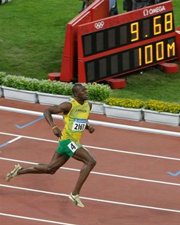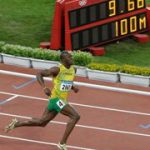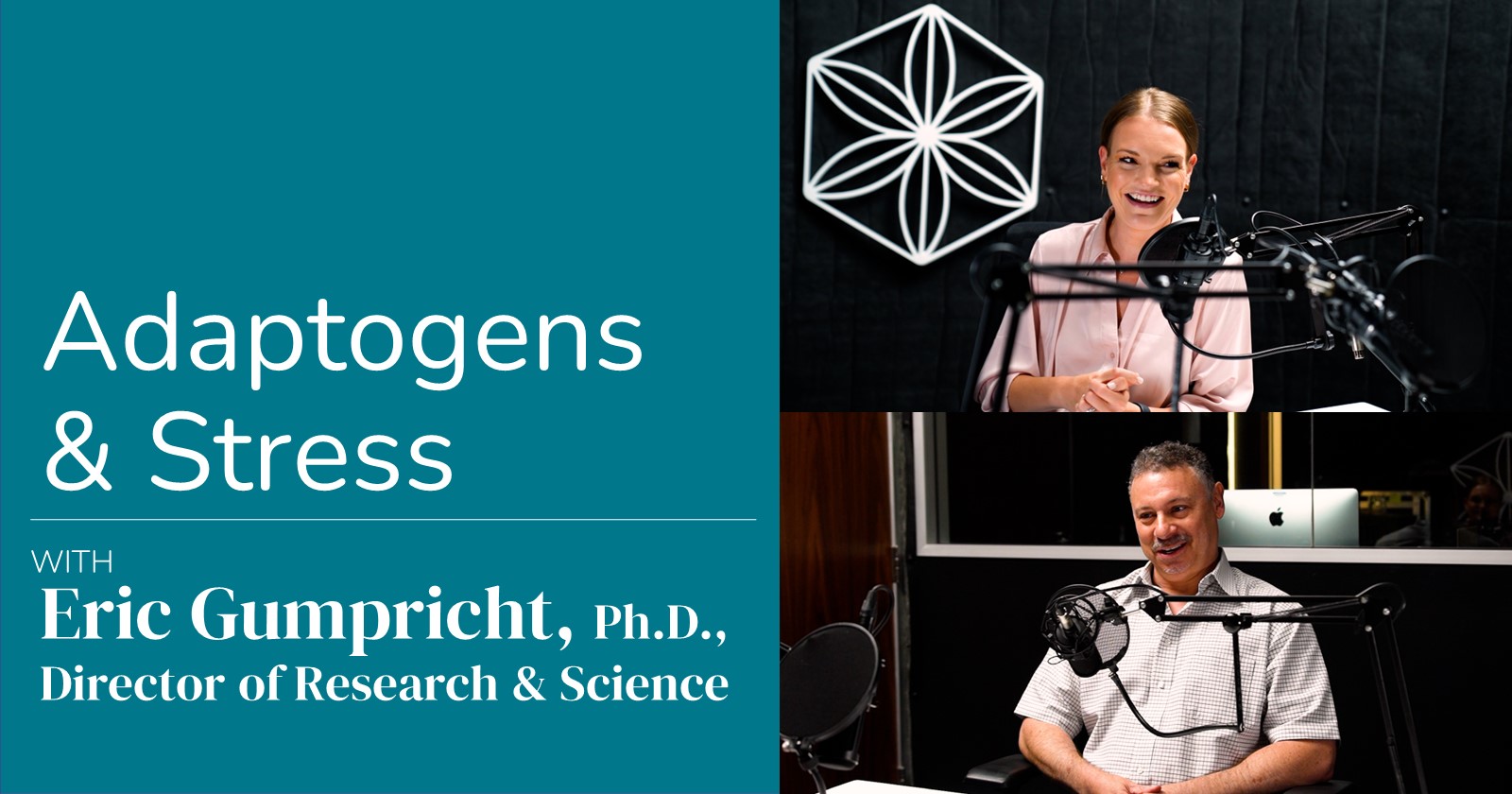by Michael Colgan, Ph.D
Questions we get and athletes we see busting their gut in the gym show us that many folk get little bang for their buck. Yet the human body is an exquisitely sensitive instrument—bursting to grow in response to every good bit of stimulation. Here are a few of our basics that transform gym training into an effective training tool.
1. Train the Brain
All movements are neuromuscular. The neural component is primary. It is created by the brain and occurs first. The muscle contractions follow the brain’s instructions.
The neural component of every movement completely controls the speed, force, coordination, rhythm, and balance of the muscular component. Without the response of the brain first, muscles do not contract. If you are serious about athletic training, you will get further, faster, if you focus on your brain every time you train your body.
To illustrate how important the brain is to movement, I will use the case of a depressed young man paralyzed from the waist down by an accident who was referred to our clinic for a strength program to better use his wheelchair. He had been through the usual rehab for a spinal cord injury, and was two years on from the accident, as far recovered as his doctor thought he would get. So we gave him an arm, shoulder, chest, and upper back power program using all the muscles he could still contract. Over months of training he slowly got stronger.
One of my trainers noticed that the guy’s left quadriceps sometimes twitched when he was doing cable pulldowns. I realized that there must be a live nerve there, so I told him to lie in bed at night and think of twitching his quad. After a few weeks he could twitch it on command. Then, with no training, the right quad began to twitch. No real surprise there. Numerous controlled studies show that the brain causes gains of strength and movement in the contralateral muscle when the muscle of one limb is trained (1). To cut the story short, one muscle led to another, and after eighteen months more training he could walk on crutches – smiling.
2. Train the Brain to Power Free Movement
The case illustrates the complexity of what you are trying to do with power training. The bulk of conventional weight training does not improve athletic performance at all because it does not give the brain the right information. We know from some of the world’s best coaches (1,2) and because we have measured the performance of more than 20,000 athletes from Olympians to weekend warriors at the Colgan Institute over the last 30 years.
The brain learns exactly what you teach it. All those weight machines with comfy seats that you see in most gyms, allow only restricted, partial, uni-planar, isolation movements. It matters not a whit that makers try to make the movement a bit more free with oscillating knuckles and whatever. Weight machines were developed to grow muscle size and shape. They develop only restricted, uni-planar, isolated, seated strength, and that is exactly what they teach the brain. If your trainer directs you to use these machines – get another trainer and switch to a decent gym.
Machine training prevents the full flexion, extension, and rotation of the limbs and core that occurs in natural movement. They prevent movement in the way the body is designed to move, the very movement you are trying to achieve. If you use them – stop now. No Olympian I have ever worked with uses weight machines. As you watch the London Olympics this coming week, resolve never to use them again.
Every time you use a weight machine that restricts standing free movement, you are teaching your brain the wrong stuff. You should not be surprised to see that machine training produces only slow, weak, un-coordinated, athletes, useless at the free movements of sport. We do not allow athletes to sit and exercise, or to use any device that restricts free movement.
Remember, you are training your brain to move. Do not do any movement in training unless it forms part of a correct movement that you do for your sport. Even one set of a wrong movement, is teaching the brain to do it wrong. Once a wrong movement is well learned, it takes at least 10,000 reps to learn the right one to override it. Teach your brain to do it right the first time.
Use standing free movement exercises or go home. Aim for whole body movements that train muscle chains. Think pinkie to toes with every effort. Train for explosive concentric contractions, controlled eccentric contractions. Train for whole body coordination, rhythm, and balance every set.
3. Train the Brain for Maximum Power per Pound of Muscle
When you begin a good power program, both strength and speed in any movement increase in about five days. This is a change in the brain, because the muscle does not show changes for about three weeks (4). How strong is this brain component? If you train one arm only, the other arm will gain almost as much strength, although its muscles do not grow larger (5).
By correctly training the brain, you can vastly increase the power of a muscle without increasing its size very much at all. Train for maximum power per pound of muscle, not for muscle mass or for absolute strength. Power is simply the speed at which you can move mass from rest.
It may not look like it, but even Usain Bolt has an instant every stride when his legs turn over where he is stationary and has to accelerate from rest. Training with the power principle yields such a big edge it has been almost kept secret among top athletes. Train always for power, not for strength, never for mass.
I first saw this power in action at a Los Angeles exhibition bout in 1964. Bruce Lee, who was 5’-7’’, and never weighed more than 135 lbs, knocked down a 200 lbs black belt, who had braced himself for it, with a two-inch punch to the gut. I sought out and was fortunate to spend some time with one of Bruce Lee’s teachers, Master William Cheung, and have taught many world champions the same principles since, including two world boxing champions, and some of the strongest and fastest athletes in the world (6).
You can get the principles of this dynamic power training free from colganinstitute.com. Study them with care. Your brain is exact in what it learns, and that sets limits to how you perform thereafter.
References
1. J. Munn, R. D. Herbert, and S. C. Gandevia, “Contralateraleffects of unilateral resistance training: a meta-analysis,”Journal of Applied Physiology, 2004;96,1861–1866,
2. Bompa T. Periodization Training for Sport. Champaign IL: Human Kinetics, 1999.
3. Colgan M. The New Power Program. Vancouver: Apple Publishing 2001.
4. Holtermann A, Roeleveld K, Vereijken B, Ettema G. Changes in agonist EMG activation level during MVC cannot explain early strength improvement. European Journal of Applied Physiology. 2005;94(5-6):593–601.
5. Gabriel DA, Kamen G, Frost G. Neural adaptations to resistive exercise: mechanisms and recommendations for training practices. Sports Medicine. 2006;36(2):133–149.
6. Colgan M. The Anti-Inflammatory Athlete. Vancouver: Science Books 2012.
About Dr. Colgan
Dr. Michael Colgan is a world-renowned research scientist, leading expert in the inhibition of aging, and a member of the Isagenix Science Advisory Board. Dr. Colgan has provided nutrition, training and anti-aging programs to more than 11,000 athletes, including many Olympians. He is director of his eponymous Colgan Institute, a consulting, educational and research facility concerned with the effects of nutrition and exercise on athletic performance, along with prevention of chronic degenerative disease, and prevention of degeneration of the brain.






